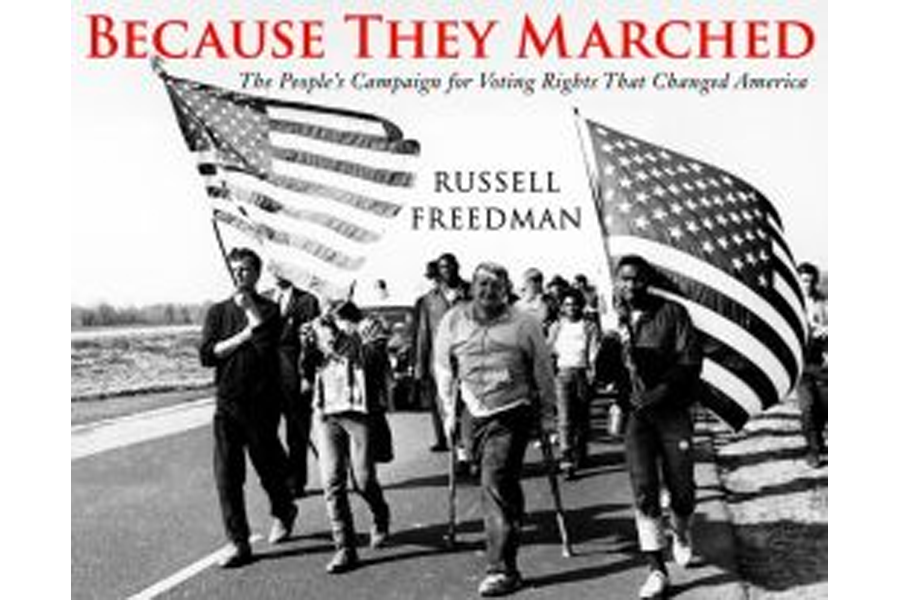(Holiday House, 96 pp.)
The events leading up to and culminating in the 1965 march from Selma to Montgomery, Ala., was a pivotal effort in breaking segregation at the ballot box and is the focus of this 50th anniversary retrospective.
EXCERPT:
“Voting, as some blacks liked to say, was ‘strictly white folks’ business.
“One barrier facing potential voters [in the South] was the poll tax, a special tax required of all voters that many blacks and poor whites could not afford to pay. Limited registration days presented another obstacle. In Selma [Ala.] the voter registration office was open for just a few hours on two Mondays a month. Black applicants who had taken time off from work might be kept waiting in line all day until the office closed, only to be told to come back some other time.
“Applicants who were admitted to the office had to take a written literacy test. If they failed to dot an i or cross a t, they could be rejected. Those who passed the written test took an oral exam that was rigged to disqualify even the most highly educated blacks."




